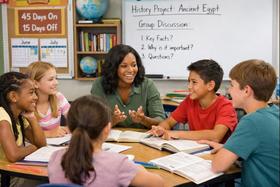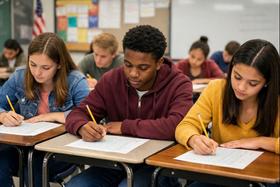As the demands and requirements for high school students are shifted towards core classes, such as English, math, and science, high schools across the country are losing money and funds for elective courses. As a result, programs in the arts, music, and other creative realms are dwindling. This not only stimulates a loss of opportunities for students, but it also stimulates a loss of jobs for teachers across the country. Specifically, according to the National Education Association, in New York City alone, over 233 elective teachers of athletics, music, and the arts were laid off due to issues of funding, testing, and a dwindling social respect for the arts and creative courses.
Causes of a Loss of Electives
School Funding
According to research from PBS, to understand why some schools are dropping specific programs, one must first understand how schools are funded. As PBS explains, “Expenditures on schooling are not equal from state to state. Some of the disparity can be explained by differing costs of educational input costs such as real estate and teacher salaries. However, when the numbers are adjusted to reflect regional wages and prices, there is still a large gap between state spending.”
As the costs of schooling and education vary across the country, some students are provided with higher budgets and opportunities to pay for elective programs. PBS provided a great example of this financial disparity: “accounting for the cost of living and price differences, New Jersey spent about twice as much as Utah per student.”
Although the costs of education vary, the reasons are fairly diverse. As PBS further explains, “School funding comes from a variety of federal, state, and city money pots. About 46 percent of public spending on elementary and secondary schools is derived from local government budgets. The size of the local tax base is one reason for the large disparity in spending.” Essentially, in order to provide students with greater elective opportunities, each school community must have local financial support. While some money is allocated nationally, a large portion of the funds available are distributed by the individual local taxpayers.
Increased Testing Demands
According to the elective music association World Music Central, another cause of the declining elective courses is due to the increased testing demands that are required by “No Child Left Behind,” in addition to other state and local assessment tests. As schools are in danger of being closed or losing funding if their students do not pass assessment tests, schools across the country are dropping elective courses in order to more strongly focus on core classes and test prep courses.
Benefits of Electives
Based on statistics and information from World Music Central, while the programs are declining, a Gallup poll in 1993 reveals that over 95% of Americans think electives, specifically music, are essential and beneficial for a child’s development.
In fact, hundreds of conducted studies and statistics support this belief. For example, according to a profile of SAT data, “Students with coursework/experience in music performance and music appreciation scored higher on the SAT: students in music performance scored 57 points higher on the verbal and 41 points higher on the math, and students in music appreciation scored 63 points higher on verbal and 44 points higher on the math, than did students with no arts participation.” Adding to this, “A study of 237 second grade children used piano keyboard training and newly designed math software to demonstrate improvement in math skills. The group scored 27% higher on proportional math and fractions tests than children that used only the math software.”
And the elective courses are not only shown to benefit children and students academically; these courses are proven to help students socially and behaviorally as well. According to World Music Central and the Texas Commission on Drug and Alcohol Abuse, “Secondary students who participated in band or orchestra reported the lowest lifetime and current use of all substances (alcohol, tobacco, illicit drugs.” Furthermore, the National Data Resource Center asserts that “students who can be classified as ‘disruptive’ (based on factors such as frequent skipping of classes, times in trouble, in-school suspensions, disciplinary reasons given, arrests, and drop-outs) total 12.14 percent of the total school population. In contrast, only 8.08 percent of students involved in music classes meet the same criteria.”
Ultimately, the elective courses of arts, music, and creative studies offer students with both cognitive and interpersonal benefits.
Fighting the Funding Crisis
According to research and information from Scholastic, the gradual drop in financial support does not mean that schools and students are facing a complete loss of elective opportunities. As Scholastic describes, “In a time of constrained school budgets and uncertain funding, several Massachusetts districts have created public school endowments that will pay for programs that otherwise might be cut.”
In examining these schools, William R. Cooper, the superintendent of the Old Rochester (MA) Regional School District, is creating a foundation that will fund the arts and electives for the local schools. According to Scholastic, “Cooper believes this is a great way to get public school districts thinking about funding over the long-term […] Cooper, whose previous school district started an endowment that grew to about $80,000, thinks that the entire district would benefit if fund-raising took place on an individual town basis. Once the endowment grows, he would like to see the money fund an extra arts teacher or an orchestra program.”
Parental involvement in fundraising or supporting local bonds can help raise monies towards school district expenditures. By working closely with the PTA and school districts, parents can become an important part of ensuring their children receive the proper elective education that will help stimulate academic success for a lifetime.
Questions? Contact us on Twitter. @publicschoolreview















